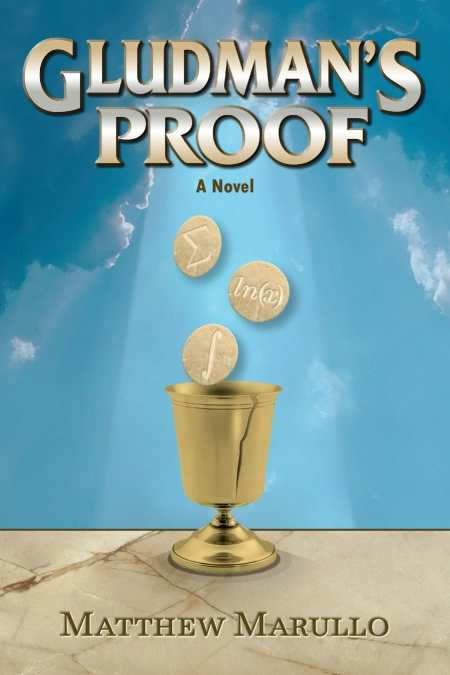Gludman's Proof
Marullo expertly links science, religion, and character development in a fast-paced, suspenseful, and entertaining read.
Circa 1270, theologian Thomas Aquinas wondered if many angels could exist in the same space at once. Matthew Marullo’s fascinating second novel, Gludman’s Proof, follows scientist Frederick Gludman and his colleagues as they try to mathematically prove the existence of heaven. This otherworldly debate represents the backdrop for a larger story starring intrepid investigative reporter Colin Traiger who finds himself in the middle of a conspiracy involving biotechnology, a rare strain of meningitis, and an unsavory incident from the hero’s past. Marullo expertly links science, religion, and character development in a fast-paced, suspenseful, and entertaining read.
Although Marullo portrays Colin as a handsome everyman able to charm anyone with a smile, his character goes beyond one dimension because of his dogged pursuit of the truth and the seriousness with which he takes his job. He dislikes his boss’s sleazy, underhanded way of getting information from sources, and he struggles to behave ethically even as he works for a two-bit tabloid.
The dialogue in Gludman’s Proof crackles, particularly the repartee between Colin and his best friend Kara, such as when she responds to the possibility of Colin becoming involved in a dangerous reporting job:
“I don’t like it when you get involved in serious stuff like that,” she said.
“Oh, come on, I’m not investigating a murder case or anything. You know me, I’m more into corruption and debauchery”’
“Yeah, well, cases like that make me feel shmoopy.”
She rolled down a bottom lip, getting the expected wide smile out of Colin. She also got a hug this time.
“Don’t worry, Shmoops.”
Colin and Kara are well-developed individuals outside of their friendship, with each being sharp-tongued, witty, intelligent, and easy to root for.
The novel certainly lives up to its billing as a mystery: just when one has figured out a piece of the puzzle, the author introduces another facet that keeps the audience reading. Nothing in this book is a red herring.
It is difficult to name a true villain, because even as the nastiest characters have disgusting motives for their behavior, Marullo emphasizes the human aspects of his antagonists. One ends up empathizing with the bad guys because their situations influence their behavior in realistic ways. The ingenious use of third-person omniscient narration allows readers to get inside many players’ thoughts, rendering these characters’ warped worldviews believable.
Although the book is set in the near future of 2019, its themes of capitalism and greed and the battle of religion versus science make the book pertinent to the present. When the author talks of the prevalence of virtual reality and biotechnology combined with medicine, he paints a horrifying picture tinged with humor about what will occur if his predictions such as favoring virtual reality to actual reality come to pass, providing much food for thought. Despite the seriousness of his themes, Marullo also uses future technology to create laugh-out-loud humor, such as Colin’s struggle with an automatic nutcracker or a chase scene complicated by a malfunctioning waiter robot in a restaurant.
Anyone who delights in technological advances, scientific discoveries, and debates about religion will enjoy Gludman’s Proof.
Reviewed by
Jill Allen
Disclosure: This article is not an endorsement, but a review. The publisher of this book provided free copies of the book and paid a small fee to have their book reviewed by a professional reviewer. Foreword Reviews and Clarion Reviews make no guarantee that the publisher will receive a positive review. Foreword Magazine, Inc. is disclosing this in accordance with the Federal Trade Commission’s 16 CFR, Part 255.

